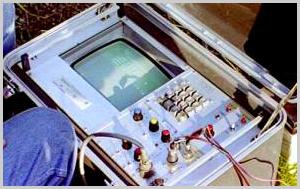
![]()
Seismologic Engineering
 __________________________________________________________________________________
__________________________________________________________________________________
This department, established in 1995, brings together researchers specializing in both the observation, analysis and modeling of earthquakes, as well as in seismic hazard assessment and vulnerability of buildings to reduce seismic risk in human settlements.
It consists of seven researchers, three academic technicians and 24 research assistants. Six researchers have doctoral degrees and one holds a master's degree. Of the academic technicians, two hold a master's degree and one is an engineer. Five of the members belong to the National Researchers System (SNI) and three of them are at level III.
The main lines of research that are carried out include: 1) Recording and analysis of strong earthquakes, aftershocks of large earthquakes, or induced seismicity, 2) Seismic monitoring for the evaluation of local faults and/or site effects, 3) Design spectra and seismic micro zonation, 4) Development of methods to study the seismic response of alluvial valleys, heterogeneous media, fractured media, and evaluation of their effects, 5) Analysis and modeling of dynamic phenomena associated with seismic sources, 6) Environmental vibration for use in seismic engineering and geotechnical exploration, 7) Earthquake expected loss in buildings, and urban or industrial infrastructure.
To carry out the experimental works, this department has specialized equipment and facilities, among which there is an electronics laboratory, where they maintain and provide support to a wide range of experiments by means of nine Kinematics accelerographs (model K2), four REFTEK seismometers ,three EDA, six MEQ800 seismographs -seismometers, plus an exploration seismograph with 24 geophones.
The results of the research and projects undertaken by this group have earned an excellent reputation nationally and internationally, which is evident from the partnership that it holds, since its inception, with public and private institutions like: the Federal District Government, Pemex , CFE, Conacyt, IMP, Joseph Fourier University in Grenoble, Kyoto University, University of Tokyo, Slovak Academy of Sciences, University of Thessaloniki, Institute of Geological and Nuclear Sciences (New Zealand), among others.